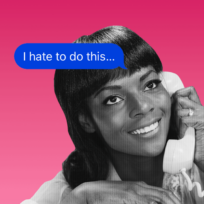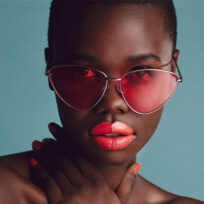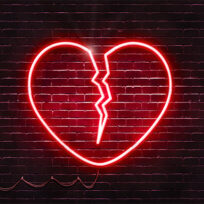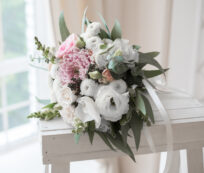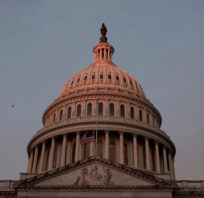In case anyone has forgotten, there’s still a pandemic going on. Unfortunately, the virus doesn’t have as short of an attention span as the President does. In efforts to slow the spread, the CDC has strongly recommended that we all wear face coverings when out in public and when social distancing isn’t an option. So, because the coronavirus hasn’t disappeared like that guy that you went on one FaceTime date with in the beginning of all this, it looks like face masks and coverings are here to stay. While masks can be great for avoiding exes and covering up breakouts, they can also be irritating your skin (and contributing to those breakouts in the first place).
If we can all agree on one thing, it’s that nobody enjoys acne, and if your skin has been particularly angry during the age of COVID-19, just know that you’re not alone. Take note of your breakouts. If your acne falls under where your face mask sits, then you may be a victim of maskne, aka mask acne. Like COVID-19, maskne doesn’t discriminate. It’s a skin issue that can affect everyone: people who are already prone to acne, people who normally have clear skin, and literally anyone who is abiding by the CDC’s face mask recommendation. Luckily, I spoke with a dermatologist to get the breakdown on these breakouts: why they’re happening, and how to prevent and treat them.
What Is Maskne?
View this post on Instagram
I spoke with dermatologist and RealSelf contributor Dr. Sonia Badreshia-Bansal, and it turns out that your maskne is actually Acne Mechanica—a skin issue that is triggered by excess heat, pressure, friction, or rubbing. Dr. Badreshia-Bansal explains, “Acne Mechanica is a special type of acne that occurs in areas of occlusion.”
“Sweat, dirt, and oil under the areas of occlusion then cause clogging of the pores, resulting in inflammation,” she adds. Acne Mechanica has traditionally affected athletes, especially those who wear helmets and shoulder pads, but now that the whole world is wearing masks on their face, literally anyone can get it.
How can you tell your typical breakouts apart from maskne? Dr. Badreshia-Bansal says that, “Acne Mechanica is distributed to the area of occlusion, so maskne will affect the area that the mask is protecting, which normally involves the lower half of the face.” Go look at your face in the mirror, when you connect the dots where your pimples are, do they all coincidentally hang out where your mask lies on your face? If the answer is yes, then you, my friend, have maskne.
How To Prevent Maskne
Like I said before, face masks are here to stay, so prevention is key. Just because your skin has survived against masks so far, doesn’t mean that you are immune to the annoyances of maskne. To use a sports reference, the best offense is a good defense, so start taking preventative measures now, rather than having to correct later. Start by opting for a breathable and soft cotton mask. Using a cotton mask will help ease any harsh rubbing and friction, and since it’s reusable you’ll be able to wash it regularly—ideally, between each use—to keep it fresh and clean. Dr. Badreshia-Bansal also advises wearers, “Wash or wipe any dirt or sweat off of the face as soon as you can, because oil and dirt can get trapped under your mask and cause breakouts.” The warmer it continues to get outside, the more pertinent that advice gets. Don’t sweat it—literally.
Another pre-emptive step, according to Dr. Dr. Badreshia-Bansal, is to “Apply a topical vitamin A serum such as a retinol, adapalene, or tretinoin.” You may also want to consider passing on full glam for now. Dr. Badreshia-Bansal recommends electing for mineral-based makeup as opposed to heavy foundations. I’m not saying that you have to fully embrace the all-natural look, but you should consider skipping full-coverage foundations that can clog your pores. After all, no one is seeing half of your face anyway.
How To Treat It
Suffering from maskne? No need to freak out, because just like any form of acne, there is an arsenal of lotions and potions aimed at treating and clearing up all of your skin sorrows. Dr. Badreshia-Bansal advises that you should treat maskne “the same as other forms of acne.” She recommends, “Use a benzoyl peroxide or salicylic acid-based cleansers.” With that advice in mind, you should continue your standard skincare routine: wash your face regularly, exfoliate your skin, and moisturize, moisturize, moisturize! Moisturized skin is happy skin, just make sure you’re using an oil-free moisturizer.
Most importantly, don’t panic if your breakouts are a result of wearing face masks. Just do what you would normally do when you break out—blame your boyfriend and do a purifying clay mask. After you accomplish that, spot treat your problem areas with your go-to pimple nullifier, and whatever you do, resist the urge to pop. Get your pimple popping fix from YouTube like the rest of us and leave your face alone! If you have an especially aggravated spot you can also apply a thin layer of Aquaphor (or Vaseline, salve, etc.) over it before you put your mask on to help eliminate friction and further irritation.
View this post on Instagram
We’ve been looking at this all wrong. credit + permission: @samanthamatt1
Maskne is a vicious cycle. You break out, you hide it with a mask, and then break out more, causing you to wear your mask more, and so on and so forth. Face masks are more than a fashion statement, so we’re going to have to adapt and learn to live with them, like it or not. Just remember to regularly wash your face, wash your mask, and to have some chocolate—the chocolate won’t help with your skin, but hey, you deserve it.
Images: Michael Amadeus / Unsplash; aj_hernandez, betches / Instagram






